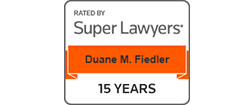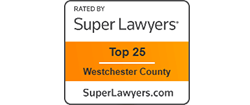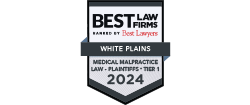The success of a personal injury case hinges on a plaintiff’s (victim’s) ability to prove another party’s negligence was responsible for their accident. Part of proving negligence requires understanding the roles of proximate and superseding causes.
How Proximate Cause Affects a Personal Injury Case
A jury will only award damages when a defendant’s (at-fault party’s) negligence was the proximate cause of the plaintiff’s injuries. Meaning there must be a direct link between the two. What makes proximate cause challenging to prove is that it involves determining whether the plaintiff’s injuries were foreseeable. For instance, let’s say a driver was texting while driving and crashed into the victim’s vehicle. When considering the proximate cause, the jury will be concerned with whether the driver could have:
- Reasonably foreseen that their actions would result in this type of injury; and,
- Reasonably foreseen that their actions would result in harm to the plaintiff.
In this example, proximate cause can be easier to prove since texting while driving is illegal, and the defendant should have foreseen that failing to pay attention to the road could cause an accident and injuries to another driver. Therefore, the defendant’s negligence would be the proximate cause of the plaintiff’s injuries.
However, proximate cause is not always straightforward. For example, let’s say the texting driver (Car A) crashed into a vehicle (Car B) which caused a third driver (Car C) to swerve to avoid the collision, and they, in turn, hit a pedestrian. The third driver (Car C) may try to claim the actions of the driver in Car A were responsible for their accident with the pedestrian. However, the driver of Car A may not have necessarily been able to have reasonably foreseen this chain reaction and may not be the proximate cause of the pedestrian accident. Other factors that could challenge proximate cause are, for instance, if the driver of Car C was following too closely or also distracted themselves when they swerved to avoid the initial collision.
How Superseding Cause Affects a Personal Injury Case
Superseding cause can interfere with proximate cause. If there was a superseding cause present, which is unforeseeable, it breaks the proximate cause link. An example of superseding cause would be the texting driver crashing into the victim’s vehicle, and then the victim stepped out of their car, tripped, and fell because of a pothole, causing them to break their leg. The texting driver would not be the proximate cause of the victim’s broken leg because the pothole was an unforeseeable superseding cause.
Get Help From a Skilled Personal Injury Lawyer
Personal injury cases rely on establishing proximate cause, and if the defendant can prove a superseding cause was present, you may not be able to recover fair compensation. If you or a loved one has suffered a severe injury in a personal injury accident, it is critical to have a Westchester County Personal Injury Lawyer evaluate your claim. They can advise you on your legal options and whether you have the right to pursue a claim.
 Because Relationships Matter
Because Relationships Matter 

















